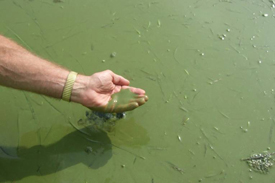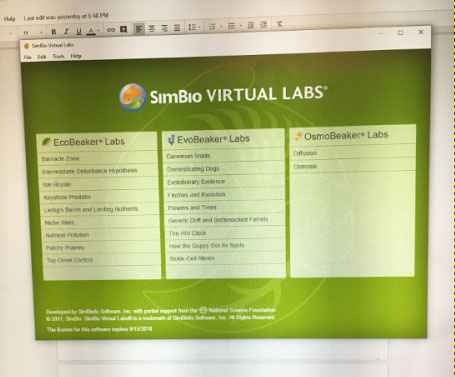 This blog is an archived post written by Sanya during her 4th year in the Environmental Politics stream.
This blog is an archived post written by Sanya during her 4th year in the Environmental Politics stream.
One of the first science based Environmental Studies courses I took was with Dr. Gail Fraser and Dr. Lewis Molot, called Introduction to Environmental Science (which students have the opportunity to sit in on through the YES! for a Day program).
Made for students who did not take biology or chemistry in grade 12, it gives a thorough understanding of the elements of scientific processes which are crucial to understanding the natural world and how our actions impact it.
This course exposes students to what constitutes good scientific experimental design and sc ience writing, as we are pitched scientific facts daily and told to make a choice or form an opinion.
ience writing, as we are pitched scientific facts daily and told to make a choice or form an opinion.
To be a proactive student and citizen, this class helped begin the development of the skills needed to read scientific studies and comprehend the data and analysis. While also giving an opportunity to get hands on experience in the field and in Environmental Studies’ very own computer lab (as shown in the picture). Using different software as well as Excel to track and display information - a skill many employers seek.
(There are also Excel training workshops offered by York’s New College if anyone needs extra help)
My favourite exercise was on leaf decomposition in the many woodlots that surround York University. These woodlots also foster a habitat for wild animals. Check out past blogger Emmanuel's post on the woodlots and Aliya and Joey's video for more information.
But the assignment that stood out most, as I have seen it appear in the news about Lake Erie time and time again, is an assignment on Eutrophication.

This picture shows the Algae growth causing the green colour on the lake's surface.
Eutrophication is when there is:
(1) too much Algae growth which causes the green colour and heavy plant matter build up on the surface of the water
(2) Growth of a bacteria known as cyanobacteria,
(3) and very low to completely absent dissolved oxygen (O2) concentrations in bottom waters that lead to death of almost every living being such as fish, that many people depend on for their livelihoods.

If nothing is done to stop the algae from growing, it will eventually lead to the body of water being undrinkable and the lake being pronounced “dead”.
We used computer software available in the Environmental Studies lab, for free to all students, to see different effects from different levels of different elements on the ecosystem of a lake. We then collected the data for a lab assignment.
Canada, as we know, has the greatest fresh water reserves in the world and it is our duty to protect and safeguard them from any harm. And when harm is caused, it is our duty to assess the challenging problems in hopes of finding positive long term solutions.
It enriches our lives with purpose and gives us a closer connection to the resources we use each and every day.
Good scientific analysis should lead to implementation of sound and achievable policies.
The 1972 Great Lakes Water Quality Agreement is an example of just that. A policy agreement between Canada and the United States to limit phosphorus inputs to the Great Lakes, particularly Lake Erie, to control excessive algae growth.
This lead to the cleaning up and decline in phosphorus levels in Lake Erie in 1970s and 1980s.
Lake Erie is the shallowest and most biologically productive of all the Great Lakes, meaning that it is highly sensitive to changes in nutrient levels and changes in the food web. Today nutrient levels are increasing in the lake again.

This shows what the lake from satellite images looked like in September of 2017.
Solving these complex problems can only begin with first understanding the problems, which is what this class exposed us to.
Sources:
- Weyler, R. (March 10). Biological Restoration of water and land. Retrieved from http://www.greenpeace.org/international/en/news/Blogs/makingwaves/biological-restoration-of-water-land-Rex-Weyler/blog/58920/
- Environment and Climate Change Canada. (updated on June 2017) Phosphorus and Excess Algal Growth. Retrieved from https://www.ec.gc.ca/grandslacs-greatlakes/default.asp?lang=En&n=6201FD24-1#a2
- Patel, J., & Kottas, Y. (2017, October 3). Miles of Algae Covering Lake Erie. The New York Times. Retrieved from https://www.nytimes.com/interactive/2017/10/03/science/earth/lake-erie.html

